Case Study: The Making of ‘I Don’t Feel at Home in This World Anymore’
Every other Thursday on the blog, we dig into the archives from Film Independent Education and examine, in detail, one film’s production journey. Our hope is that filmmakers will take lessons from these stories to apply to their own projects. Good luck!
***
This week, a timid nursing assistant gets a new lease on life when she and a neighborhood loner track down the degenerates who broke into her house, in writer/director Macon Blair’s award-winning 2017 feature film debut: I Don’t Feel at Home in This World Anymore.
THE FILM
Type: Narrative Feature
Director: Macon Blair
Producers: Mette-Marie Kongsved, Neil Kopp, Vincent Savino, Anish Savjani
Budget: $1.5 million
Financing: Netflix
Production: 30 days, March-April, 2016
Shooting Format: ARRI Alexa Mini
Screening Format: DCP
World Premiere: Sundance 2017
Distributor: Netflix
Awards: 2017 Sundance Film Festival: Winner—Grand Jury Prize
DEVELOPMENT AND FINANCING
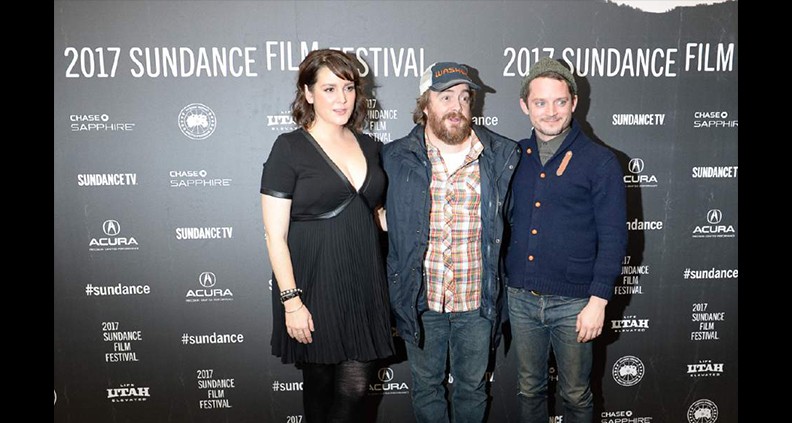
Actor and writer Macon Blair had always planned to expand into directing at some point, but I Don’t Feel at Home in This World Anymore began only as a vague idea for a character: a nurse who had gotten fed up with humanity and lost her ability to care. While co-producing and acting in Jeremy Saulnier’s Green Room in 2014, Blair started to talk with producers Neil Kopp and Anish Savjani of Portland-based production company Film Science about what a film of his own might look like. Kopp and Savjani were encouraging, and within months, Blair sat down to write his nurse character into a situation he’d experienced himself—becoming the victim of a break-in. He finished a draft in early 2015, and Film Science quickly jumped on board to produce.
From early in the writing process, Blair had imagined Melanie Lynskey and Elijah Wood in the two main roles. Though he didn’t yet have financing in place, Blair sent both actors the script, and both responded enthusiastically. But with so many of his potential financiers dependent on a foreign sales model, “basically the message was, ‘you need to get bigger stars for this,’” Blair recalls. Aware of the realities, the team made offers to bigger names, though none agreed to attach. With no bites from traditional financing sources and their target dates in spring of 2016 drawing closer, they began to think they’d have to push production.
But in early January of 2016, Blair sent the script to friend Mette-Marie Kongsved, a development executive at XYZ Films. Kongsved was intrigued, and thought the project might be a good fit for XYZ’s deal with Netflix. Very quickly, XYZ and Film Science arranged a partnership, and Blair pitched to Netflix execs while in Park City for the Sundance premiere of Green Room later that month. When he mentioned Lynskey and Wood—for the first time, he got a warm reception. “It was really refreshing,” he says. “They were just much more interested in the movie being made the way the director wanted to do it.” Blair suspects that having starred in Saulnier’s Blue Ruin—a 2013 film that’s found a healthy audience on Netflix—may have helped to convince the executives that his project would get similar traction. Within a week after the meeting, Netflix offered to finance the film in its entirety.
PRODUCTION
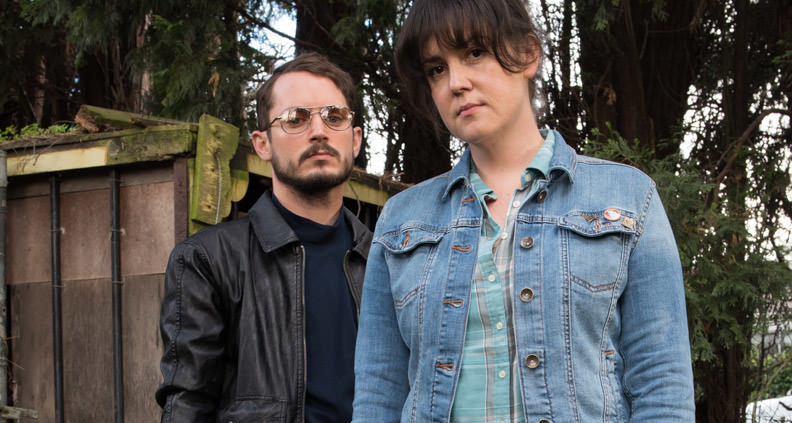
“In the span of about two weeks, we went from planning to push the movie, to full prep mode.” Blair soon found himself on a plane to Portland, where he’d shoot on location—and was grateful for the advance scouting the production team had done months prior, while they searched for financing. Though the director lives in Texas and had set the story in an unspecified Southern town, the tax incentives in Oregon—in combination with Film Science’s infrastructure and access to the local crew base—made Portland a better choice. Since he’d originally envisioned shooting in his own house in Austin, Blair found a similar ranch house that could accommodate the action he already had in mind. The filmmakers struck location gold when they discovered a massive junk shop/flea market with endless passageways stacked floor to ceiling with trash and treasure. “There’s no way we could have afforded to build a set of that size on a stage,” notes Blair.
Exteriors proved trickier, as it was gray and rainy throughout prep. Suddenly, Blair found himself having to reimagine the sunny summer backdrop he’d conceived. Luckily, the sun came out for the first day of shooting, the weather held through the month, and the landscape ultimately contributed a great deal to the visuals. “In retrospect,” Blair says, “I can’t imagine shooting anywhere else.”
When it came to casting, Blair decided to treat this film as if it might be his only opportunity to direct—with Lynskey and Wood in place, he’d fill out the ensemble with his dream cast. He’d become a fan of actor and musician David Yow, and saw in Yow’s musical performances seeds of both the menace and humor he wanted for the film’s villain. Blair also wanted to immortalize his parents on screen, and indeed they both appear in the film. Casting Director Mark Bennett came aboard to cast larger roles out of LA, and local casting director Simon Max Hill supplied day players in Portland. Casting was bittersweet for Blair, who was thrilled to discover talented actors he wouldn’t otherwise have known, but having been on the other side of the table he was sensitive to the painful nature of rejection. Netflix was supportive of his choices throughout, which made the process easier.
Blair’s acting experience had also prepared him for well for working behind the camera for the first time. “I really watched Jeremy [Saulnier] very closely, and just paid attention to the way that he would break scenes down into very specific, detailed components, and I tried to emulate that.” He also tried to be as deliberate and clear on the page as possible—even writing in specific songs and music cues to set tone—so that once the cast was on set, they had the freedom to do their jobs. Rather than mandate their processes, he encouraged the actors to work in whatever way suited them, whether that meant detailed discussion of each scene or the latitude to work through their processes in private.
“It’s tricky shooting in the woods with snakes and motorboats and quicksand,” Blair says of the complicated sequence toward the end of the film. “That was a steep learning curve.” But for the most part, the shoot went smoothly. Production lasted 30 days with a crew of seasoned industry professionals and young people eager to pay their dues. Netflix didn’t have a presence on set, but consistently gave positive feedback on the dailies.
FESTIVAL PREPARATION
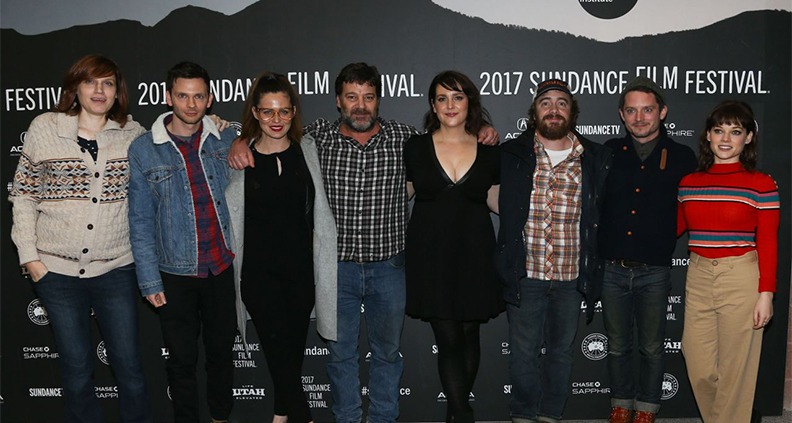
Editor Thomas Vengris began cutting in Austin while the film was still in production in Portland. Post was relatively simple, save for a startling onscreen bus accident, which Blair had shot multiple on plates that were then woven together by VFX artist Chris Connolly. Vengris, who apprenticed under Terrence Malick, had a gift for seeking out unexpected bits of footage to cut together with more predictable takes—creating scenes that felt fresh and vital. When Blair joined him—in a rented office with only a desktop computer and a couch—he was quietly pushing to be finished in time for the Sundance deadline. “I was surprised that [the producers] were willing to put up that amount of money to let a first-time director make the movie at all… So of course you’re going to try to go for a festival premiere, but I was not counting on that,” he admits. Sundance did accept the film, and though the team spent a few more weeks on the sound mix and color correction, the cut Blair submitted was the one that premiered the following January.
With distribution already in place and no investors to pay back, Blair didn’t have to worry about whether his movie would sell at Sundance—a fact that wasn’t lost on him, having seen the nerve-wracking process of a festival sale as an actor in Blue Ruin. Instead, he was able to focus on the audience response, though in hindsight he believes it had more of an impact on Netflix’s plans to market the film than he’d anticipated. “Because it did well at Sundance, suddenly billboards were being purchased and a lot of ad space on different websites. I think it got a little bit more of a push.”
Still pleasantly surprised that his movie had not only been invited to Sundance, but had received overwhelmingly positive reviews, Blair attended the closing night festivities alone with no expectations. “I didn’t even dress up,” he explains. “I was very, very confident that I would not have to stand up in front of people or say anything.” He was therefore unprepared—and very pleasantly surprised—when the film was awarded the Grand Jury Prize.
THE RELEASE
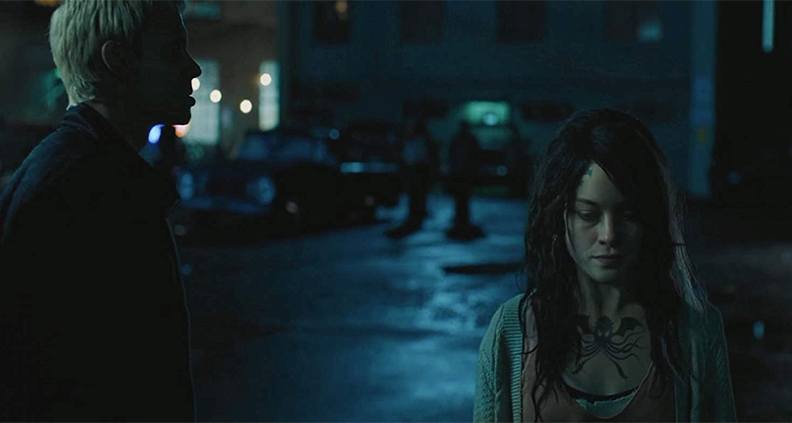
When Netflix committed to financing I Don’t Feel at Home in This World Anymore, the deal included an option to pick up theatrical rights at a later date. Happy with the dailies, the company had elected to exercise the option before shooting had even wrapped—which meant that the film would play exclusively on the Netflix platform. Though some filmmakers might have been disappointed to lose out on a theatrical run, Blair took it as another vote of confidence from the company that had believed in the project from the beginning. He also saw the upside in the film having an unlimited shelf life and the potential to reach audiences all over the world, and looks back on the supportive collaboration with Netflix as a wholly positive experience. “They didn’t try to hamstring the budget. We had all of these freedoms and permissions we weren’t going to get anywhere else. So if the only trade-off for that is there’s not going to be a theatrical screening outside of some festivals, that’s a bargain I was very happy to make.”
I Don’t Feel at Home in This World Anymore premiered worldwide on Netflix on February 24, 2017.
ADVICE FROM THE FILMMAKER
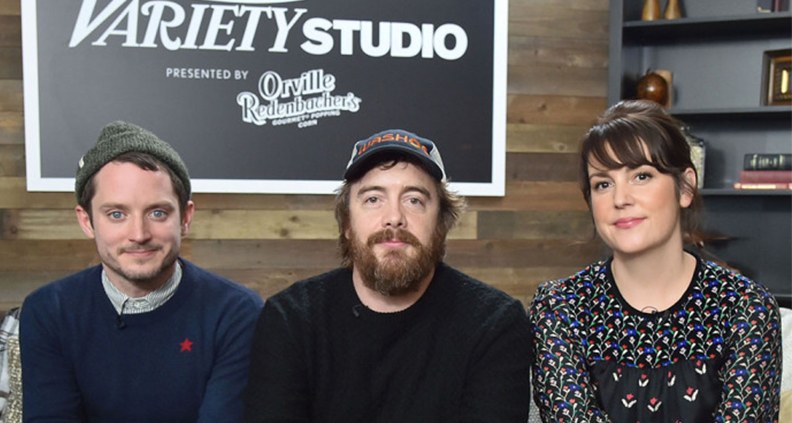
Blair recommends that despite the frustrations inherent in the process, filmmakers remember that directing is a rare privilege. “Treat people how you would want to be treated and be grateful. A lot of people want to do this and not many people actually get the opportunity. And it’ll be better for the crew and the cast if the person steering the ship is grateful to be there.”
Learn more by visiting our library of case studies for additional resources.